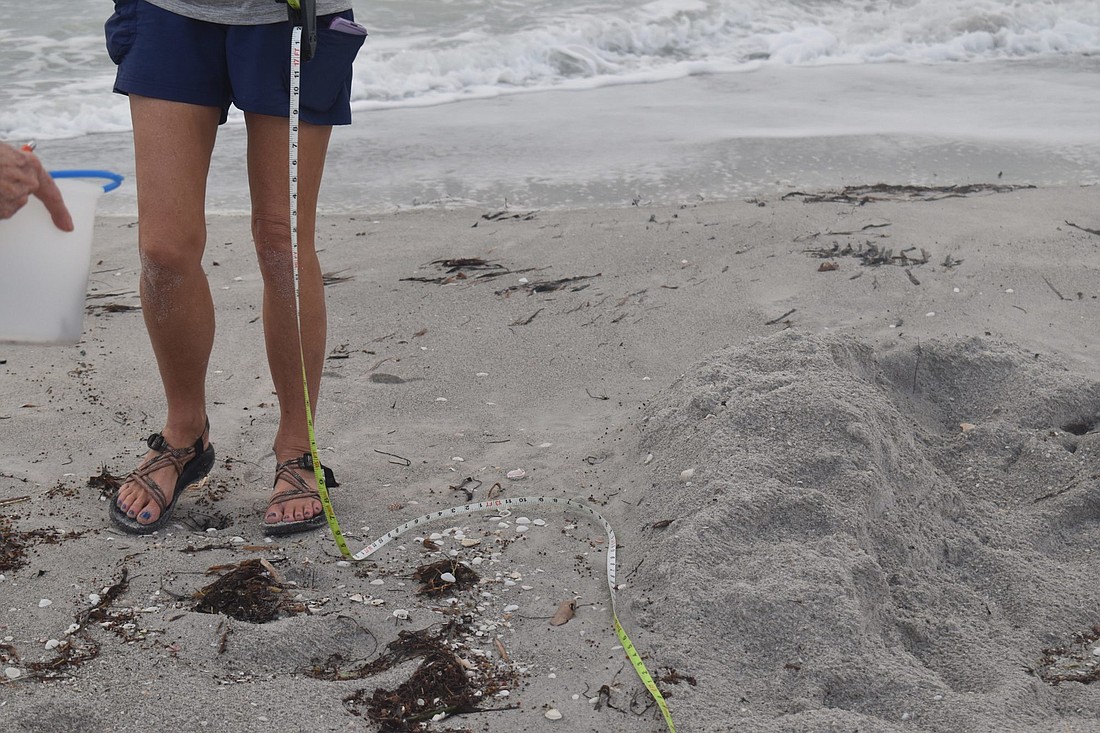- December 13, 2025
-
-
Loading

Loading

Nesting sea turtles are coming ashore more this season than last, according to mid-season numbers, and relatively rare green turtles are showing up for the first time in years.
As of July 30, the total nests for the 2019 season on Longboat Key is 1,298, compared to 955 at this point in the 2018 season. Many of those nests are hatching now, say volunteers who monitor the beaches daily. False crawls, when a turtle comes ashore and makes a U-turn without nesting, are up as well (1,498 this year compared to 985 at this time of 2018).
“Seems like we have had fewer storms and high tide issues than in years past,'' said Longboat Key Turtle Watch vice president Cyndi Seamon. "Hopefully we'll get through our peak of hatching with no bad storms. That would produce a lot of hatchlings out to the gulf.”
Seamon walks the beach several times a week for the Longboat Key Turtle Watch, picking up trash that turtles and other animals may get into and recording the nests she finds. New nests are marked, though some are not monitored as closely as others, simply because of the volume. These nests are marked as “SNM,” meaning “staked not monitored.”
“There’s not enough hours in the day to monitor them all, but we have enough nests to do a sample set,” she said.
Turtles can become disoriented by lights on the upland side of the beach, which lead them away from the water. They’re supposed to follow the moon, back into the water, but that doesn’t always happen. This is called a disorientation. The town of Longboat Key does have an ordinance in place that requires beachfront properties to turn off or shield lights at night so as not to confuse turtles, or use red and amber-colored light bulbs, which is a turtle-friendly wavelength of light.
The ordinance also requires no persons on the beach between 11 p.m. and 5 a.m. and for there to be no obstructions on the beach.
Code enforcement performs lighting inspections, and most of them are done from the beach at night, Chris Elbon, Code Enforcement Officer of Longboat Key, wrote in an email. Seamon says sometimes, beachfront properties will use party bulbs, which are just regular light bulbs with the glass painted red. That’s not the same as turtle-friendly lighting, and can still lead to disorientations.
“It looks turtle-friendly, but it’s not,” Seamon said. “It makes Chris Elbon’s job harder.”
This year, the town has partnered with the organization NESTS — Neighbors Ensuring Sea Turtle Survival — as well as the Clearwater Marine Aquarium Research Institute to help with properties’ education on how to best comply with lighting ordinances and develop best practices. The “Flip a Switch, Make a Move” campaign that started last year is still going on, with door hangers, posters and kids’ restaurant placemats reminding folks to keep the beach dark at night. Education is a big factor in keeping turtles safe.
Seamon said sea turtles can become entangled in beach furniture or other obstructions and drag it across the sand to the water. Town ordinances require the stacking of such obstructions near the dune line, but Seaman said that rule could be made more stringent. Some resorts and condos stack their furniture in a way to make it impossible for turtles to drag.
While loggerheads are still overwhelmingly the more common species to find nesting, green turtles’ nest numbers are increasing on southwest Florida beaches. On Longboat Key, two green nests have been found. None were recorded over the last three years.
At this point in the season, nests are hatching like crazy, said Seamon. As of July 11, Seamon said they were finding a nest a day, but that’s slowed down now.